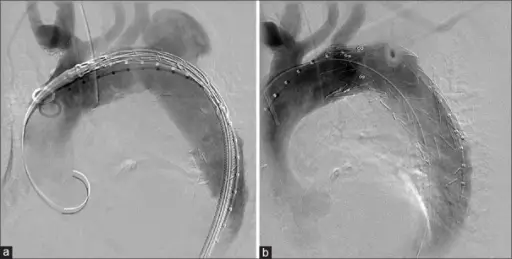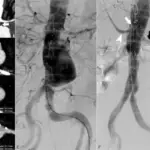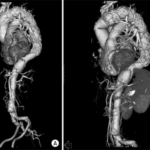Thoracic aortic aneurysm is a weakening of the upper part of the aorta.
What is the Pathology of Thoracic Aortic Aneurysm?
The pathology of thoracic aortic aneurysm is:
-Etiology: The cause of a thoracic aortic aneurysm is advanced age, genetics, smoking, hypertension, trauma, and mostly atherosclerosis.
-Genes involved: Unknown.
-Pathogenesis: The sequence of events that lead to a thoracic aortic aneurysm depends on whether it is the ascending or the descending aorta. The ascending aorta sclerosis causes the aneurysm formation while the descending aortic aneurysm is caused by atherosclerosis.
-Morphology: Unknown.
-Histology: Abnormal aortic vasculature.
How does Thoracic Aortic Aneurysm Present?
Patients with thoracic aortic aneurysms are typically male at the age range of 50-70 years old. The symptoms, features, and clinical findings associated with thoracic aortic aneurysms include back pain, hemoptysis, hematemesis
How is Thoracic Aortic Aneurysm Diagnosed?
A thoracic aortic aneurysm is diagnosed by chest x-ray, MRI, ECG, echo, CT contrast, ascending g aortogram, and contrast angiography.
How is Thoracic Aortic Aneurysm Treated?
Thoracic aortic aneurysms are treated by management of the symptoms, smoking cessation, control of the modifiable risk factors, Dacron graft, or other stent-graft.
What is the Prognosis of Thoracic Aortic Aneurysm?
The prognosis of a thoracic aortic aneurysm is poor if rupturing occurs but generally has a survival rate of 1 year if it is not treated early.



